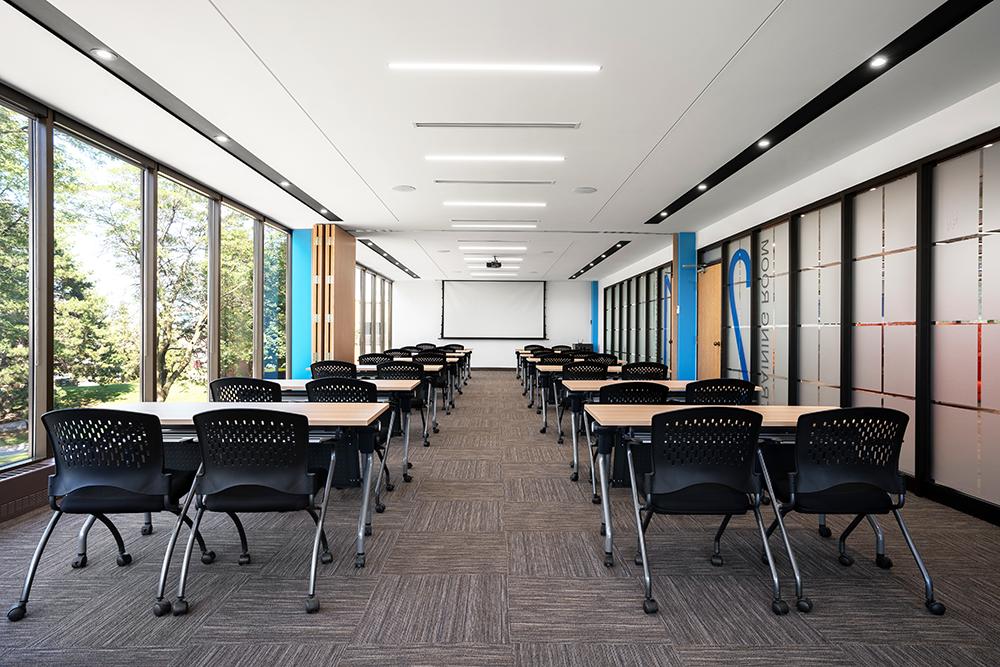
In today’s competitive business world, streamlining collaboration is critical, and Toronto hybrid meeting rooms are transforming how companies work together. These state-of-the-art spaces combine physical and virtual meeting elements, allowing participants to engage seamlessly from any location. As hybrid work models continue to grow, hybrid meeting rooms have become essential for companies aiming to boost productivity and improve team connectivity.
What Are Hybrid Meeting Rooms?
Hybrid meeting rooms are designed to support both in-office and remote participants through advanced technology. These rooms typically include high-definition video conferencing systems, top-notch audio equipment, and interactive tools to ensure that all attendees can collaborate smoothly. The goal is to create an environment where everyone, whether present or remote, can actively participate and contribute to the discussion.
Why Businesses Are Embracing Toronto Hybrid Meeting Rooms
As hybrid work models become more common, the need for effective meeting solutions in Toronto is rising. Hybrid meeting rooms enable businesses to maintain clear communication and enhance collaboration across different locations. By adopting hybrid meeting rooms, companies can ensure full engagement from team members, no matter where they are working. This inclusivity leads to better teamwork and more effective communication.
Key Features of Toronto Hybrid Meeting Rooms
- High-Definition Video Conferencing: Crystal-clear video is vital for remote meetings. Toronto’s hybrid meeting rooms are equipped with HD cameras, ensuring all participants are visible and able to engage easily.
- Advanced Audio Systems: Clear sound is essential for productive communication. These rooms feature high-performance microphones and speakers to ensure everyone can hear and be heard without any interruptions.
- Interactive Tools: Digital collaboration tools such as virtual whiteboards and shared documents allow participants to brainstorm and work together in real time, making meetings more dynamic and productive.
Benefits
Implementing hybrid meeting rooms in your business can offer significant advantages, including:
- Enhanced Collaboration: Hybrid meeting rooms bring remote and in-office participants together, fostering a more inclusive environment where everyone can contribute equally.
- Boosted Productivity: Advanced technology streamlines communication, making meetings smoother and more efficient. As a result, teams can focus on important discussions rather than struggling with technical issues.
- Cost Savings: By reducing the need for travel, hybrid meeting rooms can help businesses save on travel-related expenses. Additionally, they reduce the environmental impact of frequent business travel.
- Flexibility and Adaptability: Hybrid meeting rooms can be tailored for various meeting types, from small team discussions to larger company-wide conferences, making them versatile for any business size.
Steps to Set Up
To implement hybrid meeting rooms effectively, follow these steps:
- Assess Your Business Needs: Determine the specific needs of your business, such as team size, meeting frequency, and necessary technology.
- Select the Right Technology: Choose high-quality video conferencing and audio systems to ensure smooth and clear communication. Consider interactive tools that facilitate collaboration and boost engagement.
- Design the Room Thoughtfully: Ensure the room is designed for both in-person and remote attendees by focusing on elements such as lighting, acoustics, and seating arrangements.
- Train Your Team: Make sure all employees understand how to use the technology effectively. Providing training sessions and resources ensures meetings run smoothly and everyone feels confident using the equipment.
Success Story: Hybrid Meeting Rooms in Action
ABC Inc. implemented hybrid meeting rooms to connect their Toronto office with global teams. By incorporating advanced technology, ABC Inc. improved team collaboration, increased efficiency, and reduced travel costs. Employees reported feeling more engaged in meetings, whether attending in person or remotely, highlighting the benefits of the hybrid model.
The Future
The future of hybrid meeting rooms looks bright as businesses continue to adapt to changing work environments. With ongoing technological advancements, hybrid meeting rooms will become even more efficient, helping companies to stay competitive and connected. Businesses that embrace hybrid meeting rooms will be better equipped to handle the challenges of a more dispersed workforce.
Conclusion
Toronto hybrid meeting rooms are revolutionizing how businesses collaborate, providing a seamless blend of physical and virtual meeting elements. By investing in these modern spaces, companies can enhance communication, improve team productivity, and reduce operational costs. As hybrid work continues to expand, hybrid meeting rooms will remain a vital tool for businesses looking to stay connected and competitive.



